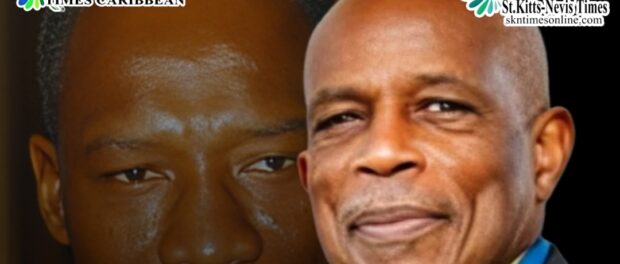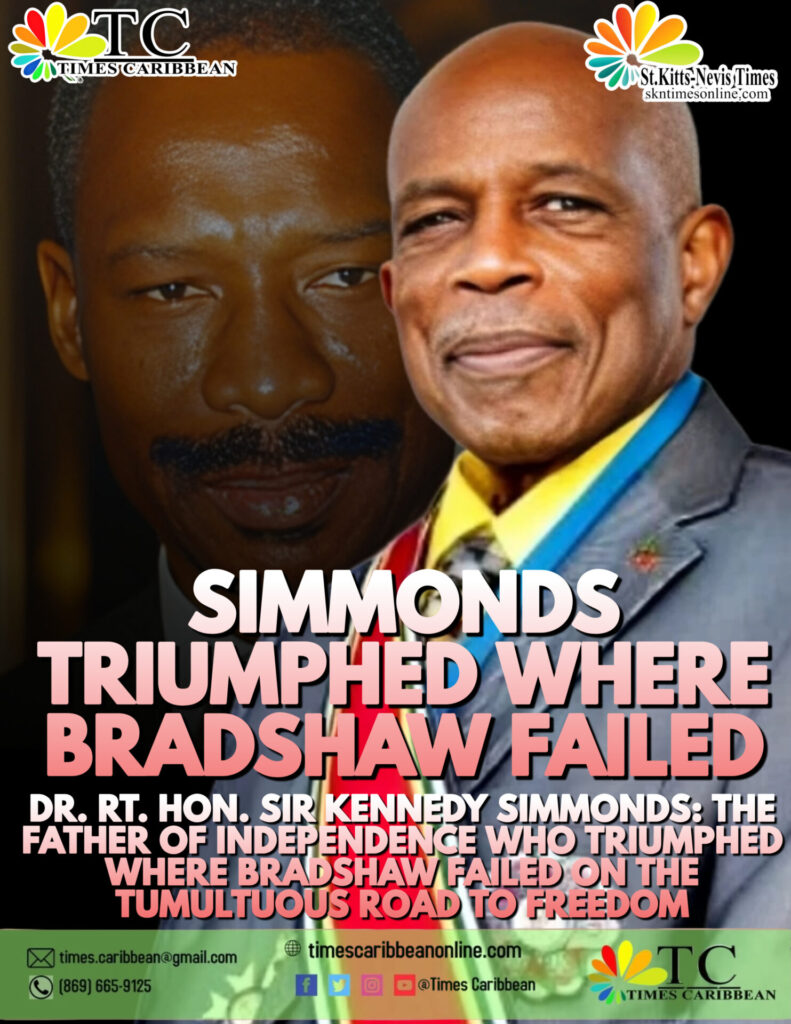DR. RT. HON. SIR KENNEDY SIMMONDS: THE FATHER OF INDEPENDENCE WHO TRIUMPHED WHERE BRADSHAW FAILED ON THE TUMULTUOUS ROAD TO FREEDOM

“ISLANDS DIVIDED: THE TUMULTUOUS ROAD TO INDEPENDENCE”
In the late 1960s and early 1970s, the islands of St. Kitts, Nevis, and Anguilla found themselves at a critical juncture. Independence from Great Britain was within reach, but unity among the islands was crumbling. Premier Robert L. Bradshaw, the visionary leader of St. Kitts, sought to forge an independent federation of the three islands, but the dream was on the verge of collapse.
Anguilla, fiercely opposed to integration under Bradshaw’s rule, sparked a crisis that would echo across the Caribbean. Their resistance wasn’t just a political disagreement—it was a bold rebellion. Anguillans rejected any association with St. Kitts, forcing the British government into an awkward position. The Queen herself hesitated to grant independence while Anguilla stood defiantly against the union.
Nevis, too, was wary of the future under Bradshaw’s leadership. The people of Nevis made their position clear: they would secede if Britain moved ahead with independence, with or without Anguilla. These mounting tensions created an impasse that threatened to tear the islands apart before they could ever break free from British rule.
In 1978, the political landscape shifted dramatically with the passing of Premier Bradshaw from prostate cancer. His death left a leadership vacuum in St. Kitts, and his successor, Paul Southwell, struggled to unite the islands. Southwell’s untimely death a year later further destabilized the region, with Lee Moore stepping in to lead during one of the most turbulent times in the nation’s history.
Amid this chaos, a by-election was held to fill the vacant seat left by Bradshaw. Dr. Kennedy Simmonds, a rising star in St. Kitts politics, contested the election, and after a fierce legal battle, a judge ruled in his favor, overturning initial results. This victory shifted the balance of power in St. Kitts and set the stage for an historic change.
Premier Moore’s administration refused to acknowledge Dr. Simmonds as the legitimate representative, leading to a prolonged and bitter parliamentary deadlock. The deadlock broke only after a general election was called. The PAM/NRP coalition, led by Dr. Simmonds, emerged victorious, taking the reins of a divided nation and steering it toward independence.
On September 19, 1983, St. Kitts and Nevis finally achieved independence, with Dr. Kennedy Simmonds as the country’s first Prime Minister. But the road to independence was far from smooth. The SKN Labour Party, led by Lee Moore, boycotted the celebrations, underscoring the deep divisions that had marked the journey.
Despite these challenges, Dr. Simmonds’ role in securing the nation’s independence cemented his legacy. Hailed as the “Father of Independence,” he guided St. Kitts and Nevis through one of its most tumultuous periods, ensuring the islands’ place on the world stage as a sovereign nation. His leadership during this historic era remains a defining moment in the history of St. Kitts, Nevis, and Anguilla.

Leave a comment
You must be logged in to post a comment.